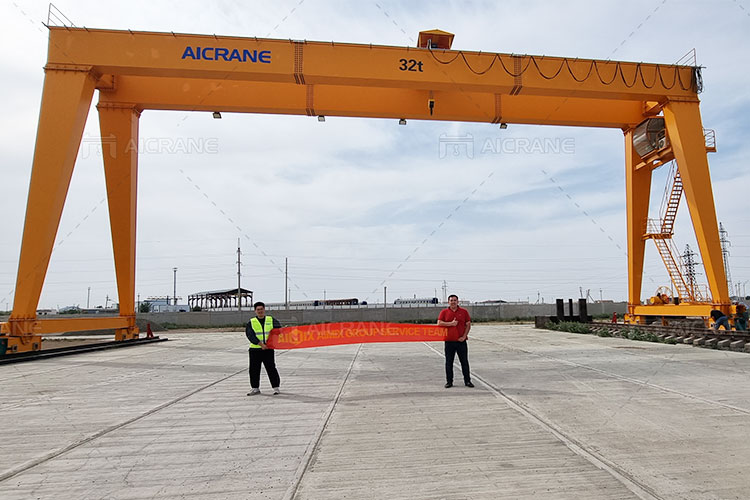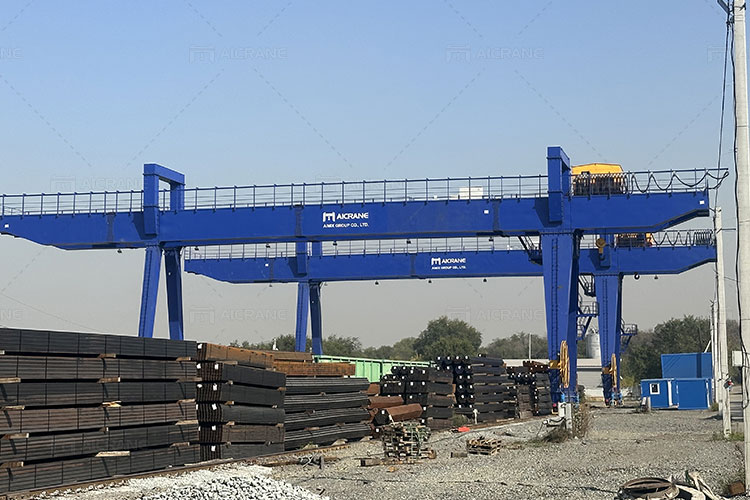When it comes to industrial lifting applications, ensuring the right hook and lifting attachments for your gantry crane is critical. The hook and attachments are not merely accessories; they are essential components that ensure safe, efficient, and precise lifting operations. For a 30-ton gantry crane, selecting the right lifting accessories can have a significant impact on productivity, safety, and cost-effectiveness. This article will guide you through the key factors to consider when choosing the right hook and lifting attachments for a 30 ton gantry crane, offering insights into various attachment types, material considerations, and safety measures.

1. Understanding the Role of Hooks and Lifting Attachments
The hook is one of the most crucial elements in the lifting process. It serves as the interface between the crane’s lifting mechanism and the load being moved. The lifting attachment, whether a spreader beam, lifting sling, or magnet, assists the hook in securing and supporting the load while it’s lifted and moved. Together, these components are responsible for the safety and precision of every lift.
For a 30-ton gantry crane, the hook and lifting attachments must be capable of safely bearing loads up to the crane’s maximum rated capacity. However, they also need to be optimized for different lifting scenarios, load shapes, and working environments.
2. Hook Types and Considerations
Standard Lifting Hooks
A standard lifting hook is the most commonly used type for overhead cranes, including gantry crane for sale. They are simple, versatile, and designed for a wide range of lifting tasks. When selecting a hook for a 30-ton gantry crane, consider the following:
-
Material Strength: The hook must be made of high-strength steel or alloy that can handle the crane’s rated capacity without bending or failing. The material should comply with industry standards for safety.
-
Hook Design: Hooks for gantry cranes generally come with a latch (safety hook) or without a latch. A safety latch is recommended to prevent the load from accidentally slipping off the hook.
-
Size and Shape: The size of the hook should be appropriate for the lifting slings or other attachments used in the operation. The hook should also be designed to minimize wear and tear on lifting gear.
Swivel Hooks
Swivel hooks are designed with a rotating mechanism that allows the hook to rotate 360 degrees. This is ideal for handling loads that may need to be adjusted in position during lifting. A swivel hook is especially beneficial when dealing with large, irregularly shaped loads where the angle of lift might change during the operation.
-
Applications: Useful in situations requiring frequent angle adjustments during lifting, such as when lifting machinery or bulky equipment.
-
Load Adjustment: The ability to rotate helps maintain the balance of the load, preventing damage to both the load and the lifting equipment.

Heavy-Duty Hooks
For 30-ton capacity cranes, heavy-duty hooks designed to handle larger loads with thicker and stronger materials may be necessary. These hooks are designed to bear the full capacity of the heavy industrial gantry crane while ensuring high safety standards.
-
Reinforced Design: These hooks are often reinforced at the throat and the eye to increase load-bearing capacity.
-
Durability: They tend to be made from forged steel, offering durability and resistance to impact or strain from heavy lifts.
3. Lifting Attachments for Specific Applications
Lifting Slings
Lifting slings are an essential accessory for any crane operation. They come in several different forms, including wire rope slings, synthetic slings, and chain slings. The choice of sling depends on the material of the load, the environment, and the type of lifting task.
-
Wire Rope Slings: These are commonly used for heavy-duty lifting and offer excellent strength and durability. They are ideal for heavy, rugged loads.
-
Synthetic Slings: Lightweight and flexible, synthetic slings, such as polyester or nylon, are ideal for loads that need to be protected from damage (e.g., finished products). They also have better resistance to environmental factors like chemicals.
-
Chain Slings: Known for their strength and resistance to abrasion, chain slings are perfect for lifting hot or sharp-edged materials.
When choosing a sling for a 30-ton gantry crane, ensure that the rated capacity of the sling matches or exceeds the lifting capacity of the crane. For example, using a sling with a lower load rating than required could result in dangerous situations.
Spreader Beams
Spreader beams are lifting attachments that are commonly used when handling large, heavy, or long loads. They provide additional stability by evenly distributing the load’s weight across multiple lifting points. For a 30-ton gantry crane, a spreader beam ensures that the load is safely distributed, preventing strain on any single point.
-
Types: Spreader beams come in two main types: fixed and adjustable. Fixed spreader beams are designed for specific lifting tasks, while adjustable beams allow for flexibility in the width between lifting points.
-
Applications: Spreader beams are ideal for lifting long loads, such as steel beams, pipes, or prefabricated components, where maintaining a balanced load is critical.
Magnets
In specific industries, such as scrap metal or steel mills, lifting magnets are used to handle ferrous materials. Magnets provide a secure and fast lifting option, especially when dealing with irregularly shaped or hard-to-secure loads.
-
Electromagnets: These are powered by electrical currents and can lift large steel or metal components efficiently. However, the magnetic strength must be adequate for lifting loads up to 30 tons.
-
Permanent Magnets: Used for lighter loads or where constant power isn’t available. Permanent magnets are simple, reliable, and don’t require power, but their lifting capacity may be lower than electromagnets.
Magnets offer the advantage of quickly lifting materials without needing hooks, slings, or other attachments, speeding up operations in certain industries.
Clamps and Grabs
For lifting materials that are difficult to secure with slings or hooks, such as pipes, plates, or bundles of material, lifting clamps or grabs may be required. These devices securely grip the load, ensuring it remains stable during lifting.
-
Pipe Clamps: Designed for the lifting of steel pipes or similar cylindrical objects, pipe clamps help distribute the weight evenly, ensuring safe lifting.
-
Plate Grabs: Ideal for lifting flat objects, like steel plates or sheets, which may be difficult to lift using a standard hook.
4. Factors to Consider When Choosing Hooks and Attachments
Load Type
Different types of loads require specific lifting accessories. For example, delicate loads may require lifting slings that can prevent damage, while heavy, bulky loads may need spreader beams or magnets for efficient lifting.
-
Size and Shape: Ensure that the attachments match the size and shape of the load. For example, if you are lifting long steel beams, spreader beams would be more appropriate than single-point slings.
-
Fragility: Delicate materials or equipment may require soft lifting slings or pads to avoid damage.
Environment
The environment in which the crane operates plays a significant role in selecting the right lifting attachments. Consider factors like temperature, exposure to chemicals, and outdoor versus indoor operations.
-
Corrosion Resistance: In environments where lifting equipment is exposed to moisture or chemicals (e.g., offshore rigs or manufacturing plants), it’s important to choose attachments made from materials that are resistant to corrosion, such as stainless steel.
-
Heat Resistance: In industries such as foundries or steel mills, where high temperatures are common, choosing lifting accessories that can withstand extreme heat is essential.
Safety Standards
Lifting accessories, including hooks and attachments, must meet strict safety standards set by regulatory bodies like OSHA or EN standards. These guidelines ensure that hooks, slings, and other attachments are safe for use and designed to minimize the risk of accidents.
-
Certification: Ensure that hooks and attachments are certified by recognized bodies to guarantee their safety and reliability.
-
Inspection: Regular inspection of hooks, slings, and other attachments is necessary to detect signs of wear, corrosion, or damage that could compromise safety.
5. Conclusion
Choosing the right hook and lifting attachments for a 30-ton gantry crane is essential for maximizing operational efficiency and safety. The selection depends on the type of load, environment, and specific lifting requirements. By understanding the various types of hooks, slings, spreader beams, and other attachments, you can ensure that your crane operates at its full potential while maintaining safety. Always ensure that the lifting accessories meet industry safety standards and are regularly inspected for wear and tear. Proper selection and maintenance of hooks and lifting attachments will not only enhance productivity but also reduce downtime and the risk of accidents in the workplace.
